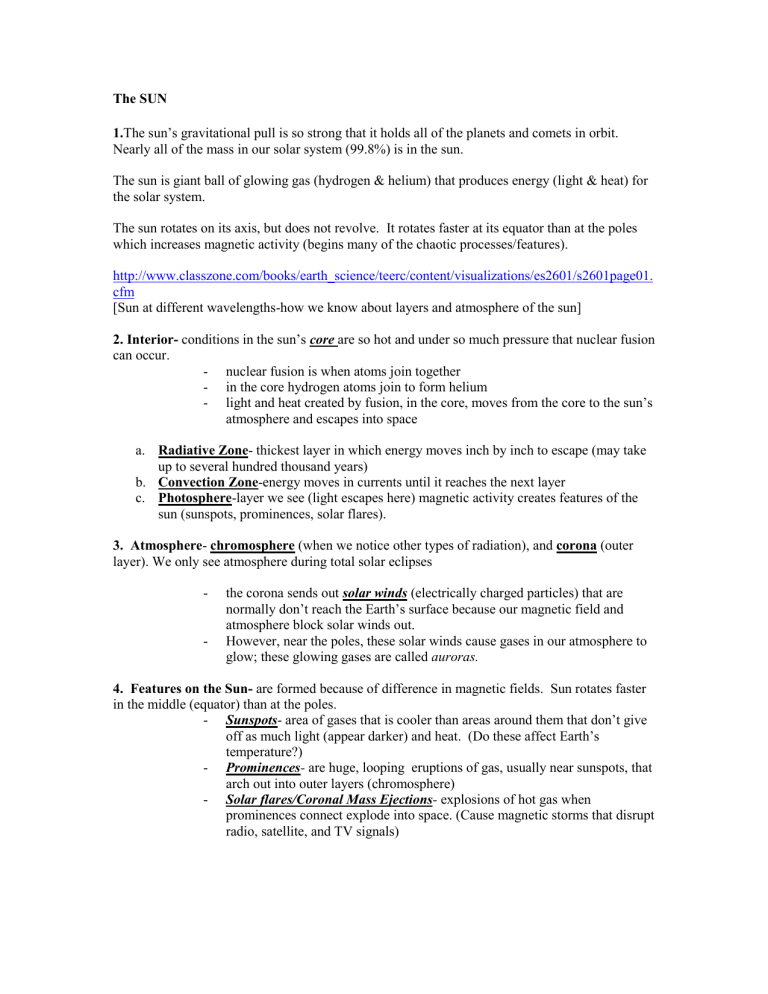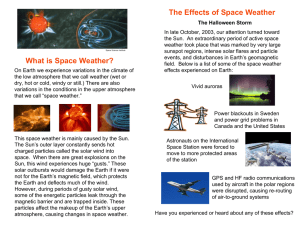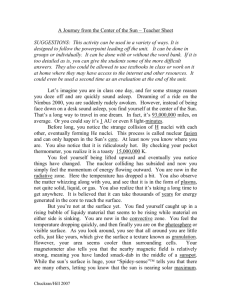The SUN

The SUN
1.
The sun’s gravitational pull is so strong that it holds all of the planets and comets in orbit.
Nearly all of the mass in our solar system (99.8%) is in the sun.
The sun is giant ball of glowing gas (hydrogen & helium) that produces energy (light & heat) for the solar system.
The sun rotates on its axis, but does not revolve. It rotates faster at its equator than at the poles which increases magnetic activity (begins many of the chaotic processes/features). http://www.classzone.com/books/earth_science/teerc/content/visualizations/es2601/s2601page01.
cfm
[Sun at different wavelengths-how we know about layers and atmosphere of the sun]
2. Interior- conditions in the sun’s core are so hot and under so much pressure that nuclear fusion can occur.
nuclear fusion is when atoms join together
in the core hydrogen atoms join to form helium
light and heat created by fusion, in the core, moves from the core to the sun’s atmosphere and escapes into space a.
Radiative Zone - thickest layer in which energy moves inch by inch to escape (may take up to several hundred thousand years) b.
Convection Zone -energy moves in currents until it reaches the next layer c.
Photosphere -layer we see (light escapes here) magnetic activity creates features of the sun (sunspots, prominences, solar flares).
3. Atmosphere - chromosphere (when we notice other types of radiation), and corona (outer layer). We only see atmosphere during total solar eclipses
the corona sends out solar winds (electrically charged particles) that are normally don’t reach the Earth’s surface because our magnetic field and atmosphere block solar winds out.
However, near the poles, these solar winds cause gases in our atmosphere to glow; these glowing gases are called auroras.
4. Features on the Sun are formed because of difference in magnetic fields. Sun rotates faster in the middle (equator) than at the poles.
Sunspots - area of gases that is cooler than areas around them that don’t give off as much light (appear darker) and heat. (Do these affect Earth’s temperature?)
Prominences are huge, looping eruptions of gas, usually near sunspots, that arch out into outer layers (chromosphere)
Solar flares/Coronal Mass Ejections explosions of hot gas when prominences connect explode into space. (Cause magnetic storms that disrupt radio, satellite, and TV signals)











